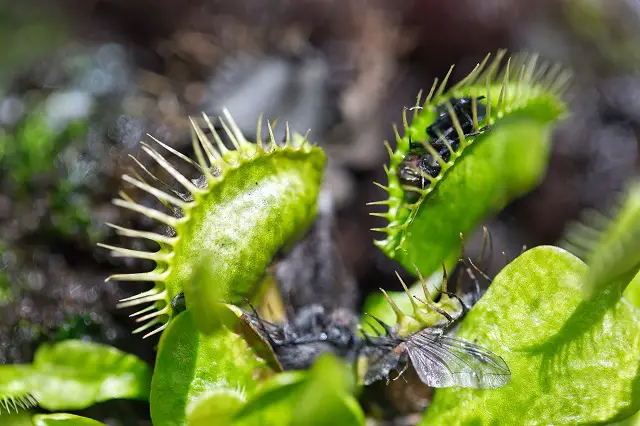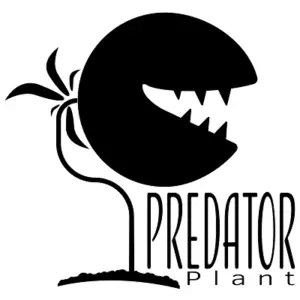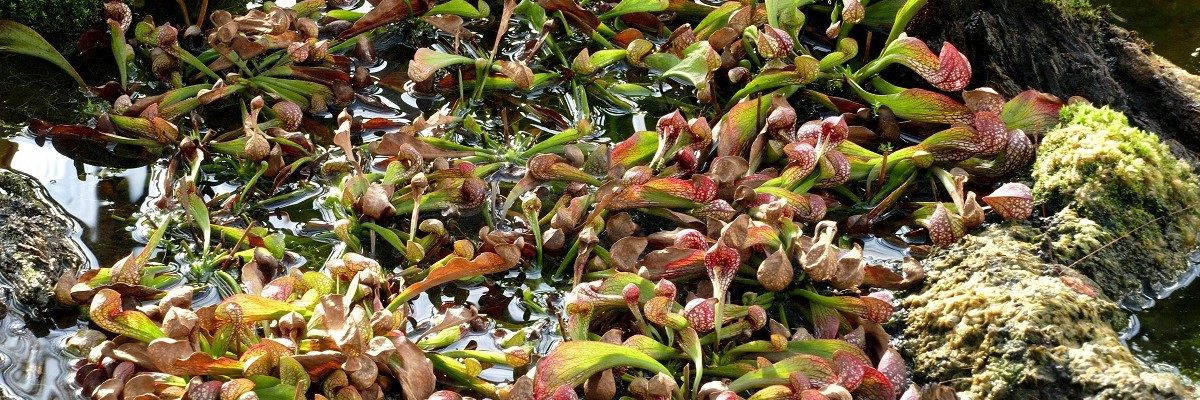Venus flytraps are naturally found in the United States. The plant grows in swamps, bogs, and other nitrogen-poor areas. There are natural populations in North Carolina, South Carolina, New Jersey, and northern Florida. In addition to Alabama, California, Delaware, Florida, and New Jersey, Venus flytraps are common in the horticulture trade. Venus flytraps are not tropical plants, requiring a period of dormancy during the winter to survive.
Countries like England and New Zealand have also adopted and naturalized it. Because these populations do not occur in the species’ historical range, they are not considered natural populations.
Venus Flytrap Natural Habitat
The longleaf pine habitats of the Venus flytrap differ in the Coastal Plain and the Sandhills region of the Carolinas. There are two types of wet loamy pine savannas found in the coastal plain where Venus flytrap is more common: wet loamy pine savannas and wet sand pine savannas. The soil at these locations is generally damp for most of the year. The species rarely occurs in lower areas that are frequently flooded, although it may appear at their edges. It is confined to narrow, moist shrub bogs along small creeks and their headwaters in the Sandhills region.
Venus flytraps are declining in number and size due to changes in habitat brought about by fire suppression, agricultural practices, and residential and commercial construction practices. Logging, bedding, ditching, and draining are examples of these practices.
Fire suppression leads to shrub and tree encroachment and a deterioration of the habitat quality for Venus flytraps. Clear cutting and bedding can physically damage plants, while ditching and draining can dry out the soil, which would be harmful to the moisture-dependent Venus flytraps.
Venus flytraps are also threatened by over-collection. Venus flytraps are also threatened by poaching, and theft has recently increased. Five North Carolina counties have now made stealing Venus flytrap plants a felony.
Venus flytraps are mostly cultivated now.

For healthy growth, Venus flytraps require direct sunlight. Your flytrap’s leaves will become weak and floppy if it doesn’t get enough sunlight, and its traps won’t be red. When you are growing your plants indoors, choose a windowsill that gets plenty of sunshine.
Terrariums are not necessary for their growth, although they often prefer enclosed environments with a higher humidity level. Artificial lighting can be effective, especially T5 grow lights with high power. They can thrive in terrariums if these requirements are met and receive enough light.
Conservatories and unheated greenhouses are excellent places to grow them. In the Carolinas, summer temperatures frequently exceed 30°C (86°F), while winter temperatures dip below 0°C (32°F).
Venus flytraps require pure water, like many other carnivorous plants. Giving them bottled, filtered, or tap water can build up minerals that will eventually kill them. Venus flytraps have evolved to grow in damp, low-nutrient soil. It is best to avoid fertilizers for the same reason. The best water sources for you are rainwater, distilled or deionized water, and reverse osmosis water.
You should stand your pots in about 1 cm of water (about 1/3 inches) during the growing season and avoid watering the tops of your pots. In moist but not completely flooded soils, they grow best. Winter is a good time to keep the soil damp but not wet.
As shorter days and lower temperatures will cause your plant’s leaves to turn black and the rhizome to die back. The dead growth can be trimmed off safely. Before your plants begin to grow again, repot and divide them if necessary at the end of the winter dormancy period. An adult plant needs a pot of at least 10 cm (4 inches).
Conclusions
A great deal of the wetlands has been developed for urban purposes. For decades, collectors dug up and sold them. This has resulted in the decline of these plants. Fire suppression has impacted the environment. A single disaster could have a major impact on the existence of the population in the wilderness, with a range of only 100 square miles in North and South Carolina.
Despite this, there is still hope. The remaining habitat for Venus flytraps is entirely protected: it is owned and managed by The Nature Conservancy and the North Carolina government. Illegal collection (poaching) remains a concern. You should look for a reputable grower if you want to grow a Venus flytrap.


